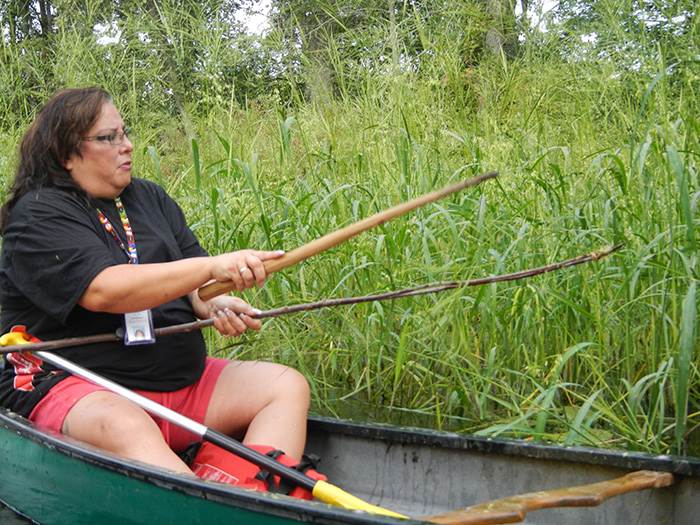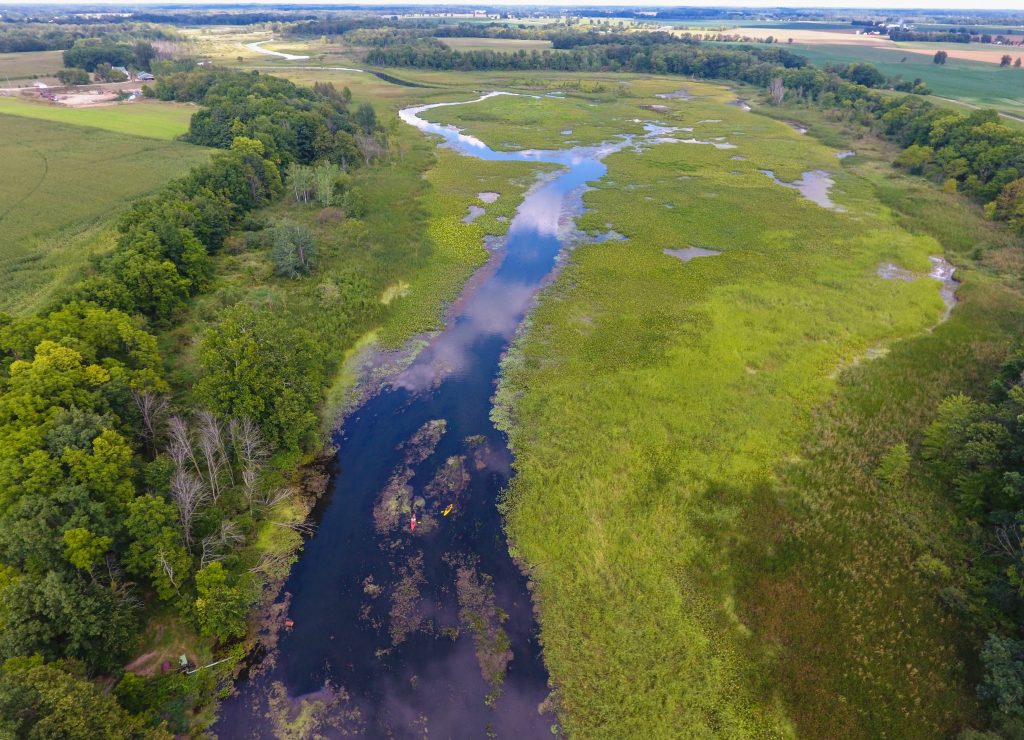
Nottawaseppi Huron Band of the Potawatomi
A drone’s eye view of rice beds in Nottawa Creek which flows into the St. Joseph River near Mendon, Michigan.
By Quinn Zimmerman
An ancient and culturally significant crop is getting a boost from modern technology.
Wild rice, or manoomin, has declined significantly in recent years, but drones are helping one Michigan tribe restore it.
The Nottawaseppi Huron Band of the Potawatomi have found drones to be effective at monitoring wild rice beds in the St. Joseph River basin. The aircraft are essential to wild rice restoration efforts, said John Rodman, the director of environmental relations for the Nottawaseppi in southwest Michigan.

Flowering wild rice. Image: NHBP Environmental Staff
Wild rice grows in rivers and lakes around the Great Lakes region. It has been harvested by native tribes for generations. In addition to providing food for many tribes, harvesting wild rice is a sacred tradition. It is a connection to culture and community.
“The health of rice is the health of community,” Rodman said.
Wild rice has declined severely in recent years due to weather changes, pollution, fertilizer and herbicide runoff, disease and invasive species, said Barb Barton, the author of “Manoomin: The Story of Wild Rice in Michigan.”
Drones are an effective way to monitor losses, said Barton, an aquatic resource specialist and endangered species researcher with the Michigan Department of Transportation.
The Nottawaseppi tribe acquired its first drone three years ago and a second one this year, Rodman said. Both were funded through tribal general fund dollars and are used for federally funded restoration programs.
Drones allow for wide range high definition aerial imaging and videos of wild rice beds, said Robert Goodwin, senior geospatial analyst at Michigan State University and a drone pilot for agricultural research.
The drones take images that computer software uses to map locations and outline the size of wild rice beds, said Goodwin. Knowing locations and size of the beds is necessary to monitor, protect and restore them. Tracking the images over time shows how wild rice patches move, grow/shrink and change in density—important indicators of wild rice health.
The drones make monitoring significantly easier, Barton said. Without them, researchers would have to visit the beds in canoes and take individual GPS points. The canoes are harder to navigate and do not give a full view of the size or density of the beds.

NHBP Tribal Member harvesting Wild River Rice in a traditional method. Image: NHBP Environmental Staff
There are standardized protocols to monitor ecological conditions without technology such as observing water quality and the type of animals and aquatic plants that are present, Barton said. The Nottawaseppi continue to use some of these traditional approaches.
“Along with conventional ecological science, the tribe merges traditional ecological science to form a holistic and sustainable approach to wild rice management,” Rodman said in an email.
The Nottawaseppi Band is leading the state in wild rice monitoring as it is the only tribe to use drones, Barton said. She expects other tribes that harvest wild rice to acquire them soon to aid in monitoring and restoration.
